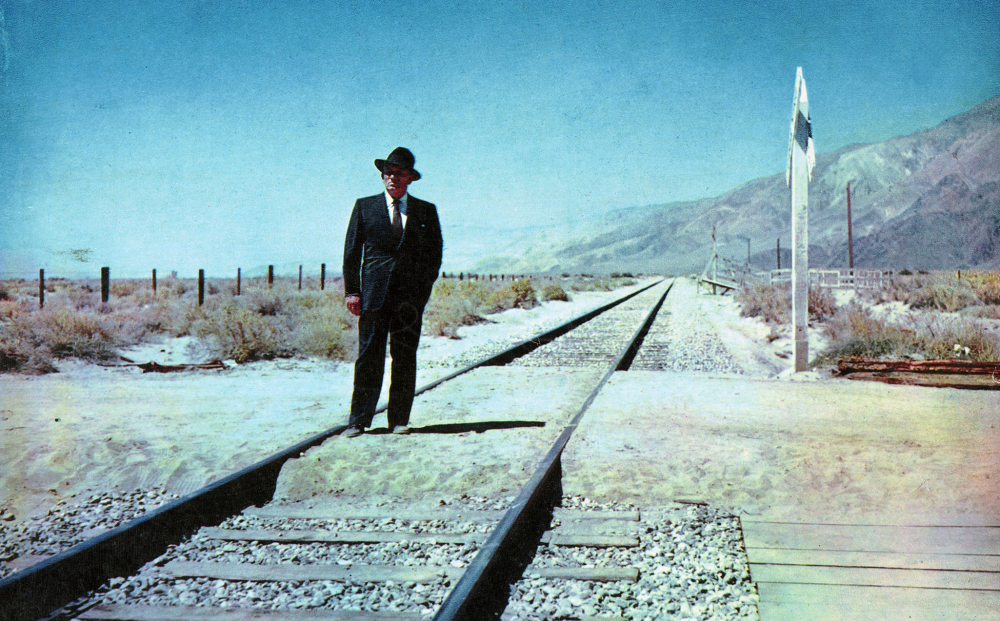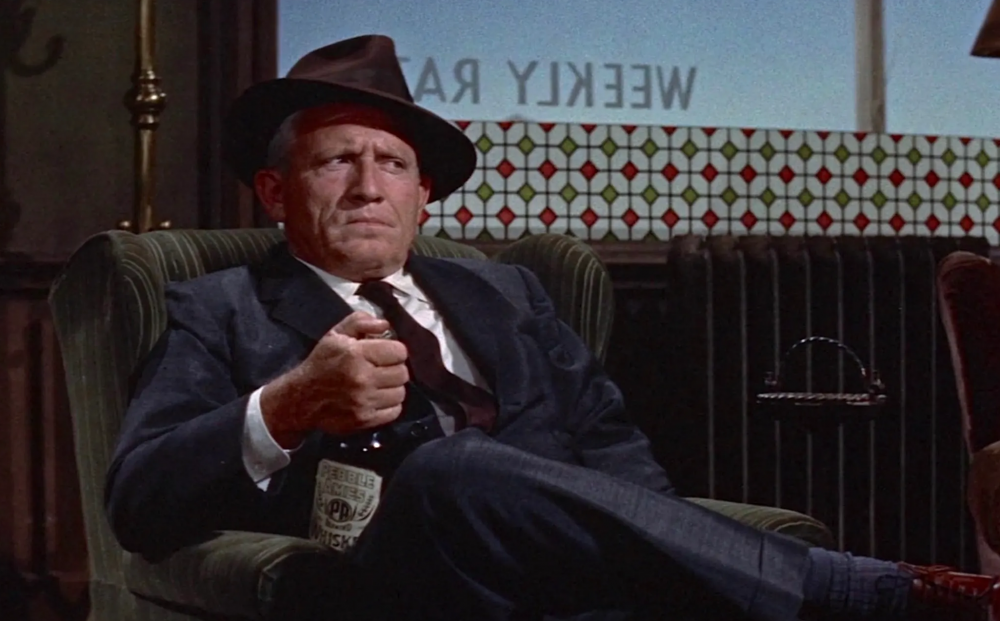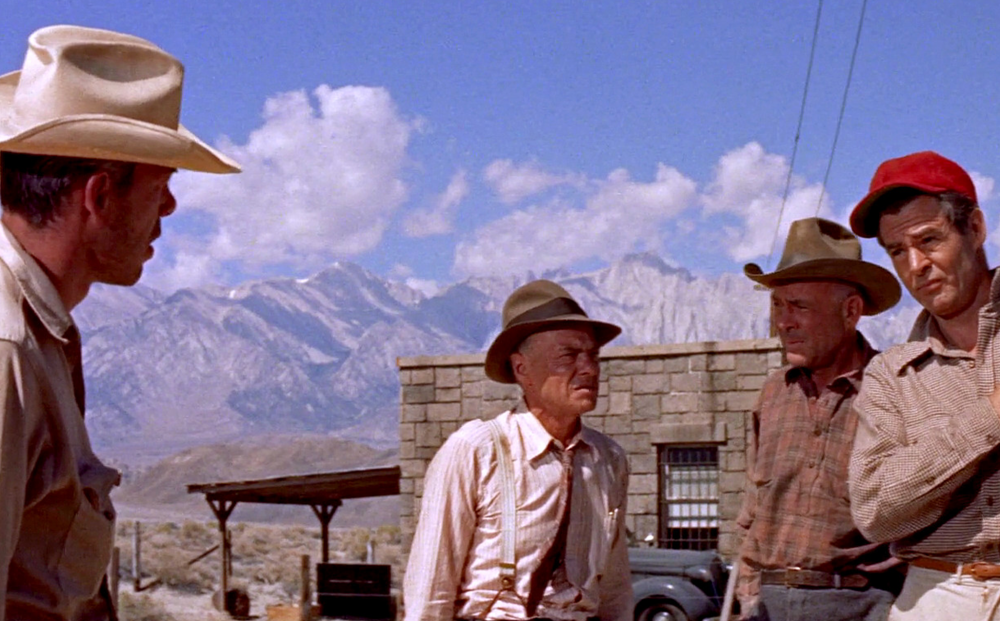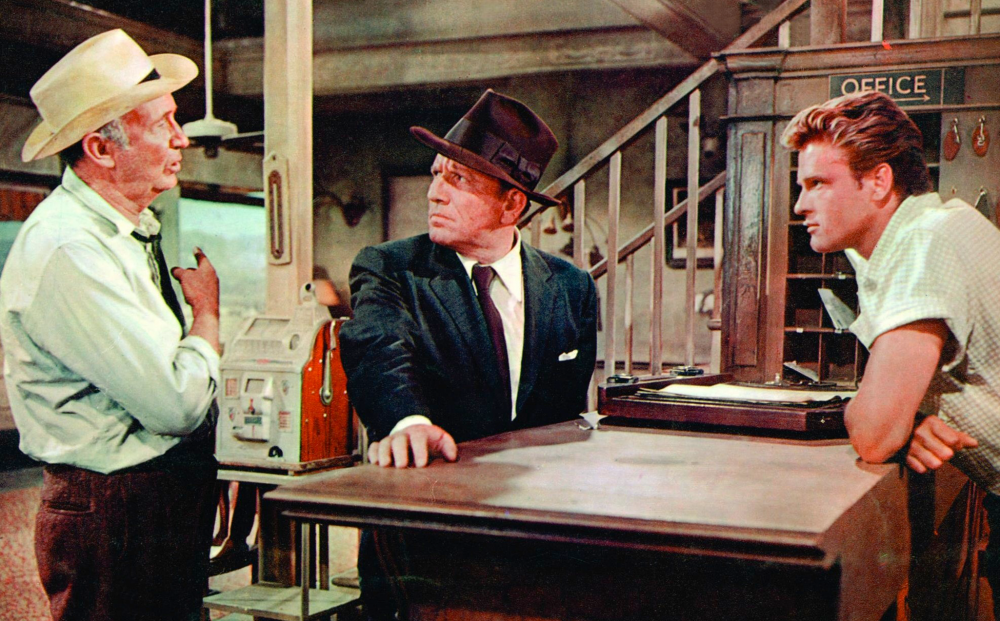BAD DAY AT BLACK ROCK
U.S., 1955
Directed by John Sturges
Starring Spencer Tracy, Robert Ryan, Anne Francis, Ernest Borgnine
Screenplay by Millard Kaufman, Don McGuire
Approx. 81 min. 35mm.
Loafers gape as the ultra-modern diesel Streamliner eases to a halt — for the first time in four years — at Black Rock, a half-horse hamlet outposted amid pancake-flat desert stretching endlessly to mountains rearing up on the horizon. But when a taciturn Spencer Tracy, his left arm permanently jammed into his coat pocket, steps out in search of Adobe Flats, he doesn't exactly get a warm welcome from cheerfully nasty Ernest Borgnine, low-hatted Lee Marvin, on-the-sauce sheriff Dean Jagger, or sexy grease monkey Anne Francis. And then nosily insinuating rancher Robert Ryan arrives, and phone lines are tied up, telegrams aren't sent, jeep driving proves hazardous, doc/vet/mortician Walter Brennan's "sort of limousine" gets disabled... but there's a virtuoso judo display, cold-cocking via fire hose nozzle, and homemade Molotov cocktail to come. John Sturges' (THE MAGNIFICENT SEVEN, THE GREAT ESCAPE) taut thriller expertly utilizes an all-star cast and the then-new Scope screen, as groups of scheming men languidly rearrange themselves against otherwise mostly empty, widescreen vistas, with blacklistee Millard Kaufman's screenplay ("arguably the most politically savvy of its day" – Village Voice) tackling post-WWIl anti-Japanese racism as well. Tracy won Best Actor at Cannes and an Oscar nomination; ironically, he lost that year to villainous co-star Borgnine in MARTY. "Achieves a kind of grandeur simply by virtue of its intelligent belief in the genre itself." – Terrence Rafferty, The New York Times. "Half a century later, Sturges’ clean, evocative aesthetic and firm grasp of widescreen remain sorely underappreciated... Sturges laces his allegory with mounting tension, a handful of crackling action sequences and dry wit... A penetrating portrait of the vileness of intolerance and the dire consequences of craven conformity." – Nick Schager, Slant. "A very superior example of motion picture craftsmanship. Each movement and line is exact and economical; the cinematographer William Mellor uses CinemaScope and color with intelligent care — the compositions seem realistic, yet they have a stylized simplicity. In part because of this, when the violence erupts, it's truly shocking." – Pauline Kael.
“Set in a small town on the edge of a sunbaked wilderness, the story is made to order for CinemaScope, and John Sturges’ handling of the wide screen is among the most acclaimed, and thematically justified, of the first-wave era. In the title sequence, a train speeding through an empty-canvas landscape and photographed from a variety of distances and angles seems like an engine of destiny. Emerging from the train is a one-armed stranger (Spencer Tracy), a veteran on a mission to present a medal of honor to a Japanese resident of the town, the father of a heroic son slain in battle. On his quest, the outsider confronts groups of townspeople, as many as six or seven, placed across the screen in horizontal and diagonal formations. The absence of one-shots reinforces the film’s theme of collective guilt.” – Foster Hirsch
Reviews
“A hybrid of contemporary western and social problem picture, John Sturges' BAD DAY AT BLACK ROCK (1955) is one of the most intelligent examinations of violence in American movies.”
– Charles Taylor, The New York Times




